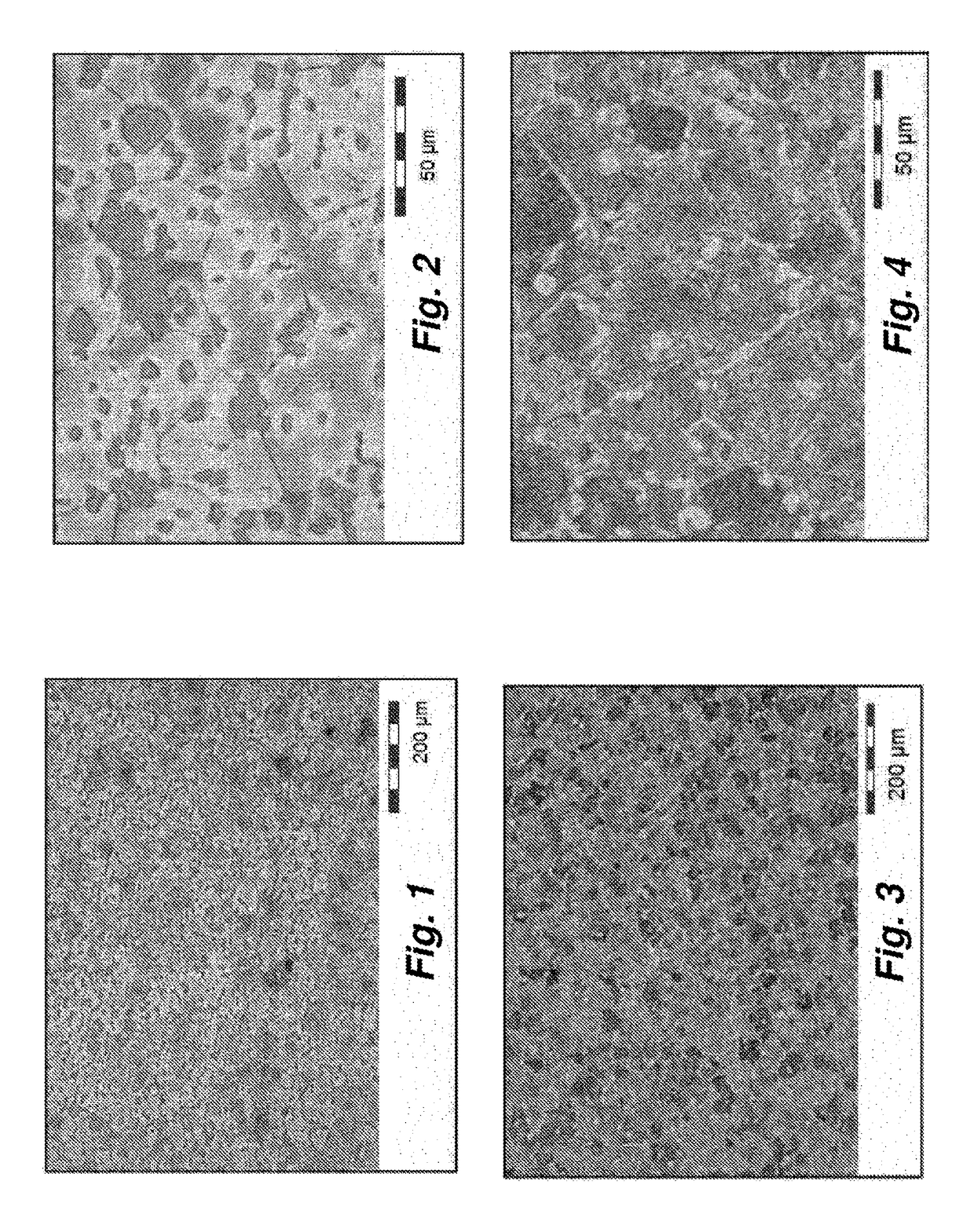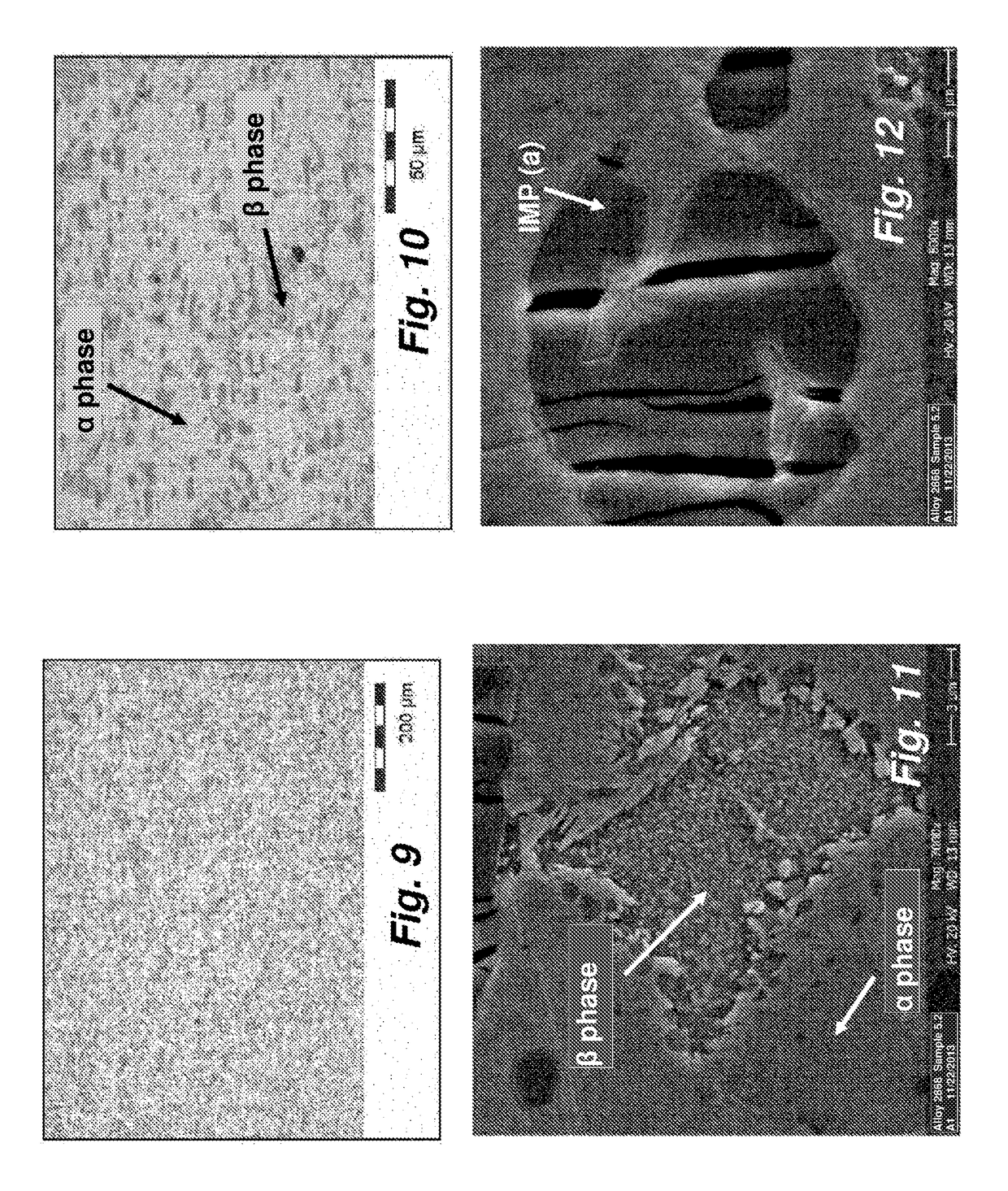High-Tensile Brass Alloy and Alloy Product
- Summary
- Abstract
- Description
- Claims
- Application Information
AI Technical Summary
Benefits of technology
Problems solved by technology
Method used
Image
Examples
first embodiment
[0156]The aluminum content for the high-tensile brass according to the invention, which is selected to be relatively high, suppresses the conversion of the β phase to the α phase during cooling of the alloy in the cast state, so that, despite the relatively high zinc proportion that is selected, a dominant β phase, not an α / β mixed phase, results.
[0157]Due to the extrusion which follows the casting, an extrusion state is achieved, shown as light micrographs in FIGS. 1 and 2 with cross section magnifications of 100× and 500×, respectively. The structure, which is significantly refined compared to the casting, has a matrix with a uniform β phase in which intermetallic phases, which are divided into two average sizes, are intercalated. The larger intermetallic phases are present at the grain boundaries and also in the interior of the grains, while the smaller intermetallic phases are present only at the grain boundaries. Based on longitudinal sections, not illustrated in detail, it was...
second embodiment
[0163]The extrusion product of the high-tensile brass alloy is treated by soft annealing in a subsequent process step; the soft annealing state is illustrated by the cross-sectional light micrographs shown in FIGS. 9 and 10. The structure after the soft annealing at an annealing temperature of 450° C.-550° C. is dominated by the α phase, and has island-like β phase portions.
[0164]The soft annealing is followed by cold forming, the degree of deformation typically being selected in the range of a 5-15% reduction in cross section. Lastly, a final annealing is carried out; for an annealing temperature of 450° C.-550° C., a predominant α phase portion, together with a β phase portion that is increased compared to the soft annealing state, results.
[0165]The alloy according to the second embodiment was characterized in the alloy end state by scanning electron micrographs and EDX analyses. FIGS. 11 and 12 show examples of scanning electron microscopy images of the α / β mixed matrix and the ...
third embodiment
[0170]Starting from the extrusion state, the high-tensile brass alloy is treated by soft annealing in a subsequent process step; the soft annealing state is illustrated by the cross-sectional light micrographs shown in FIGS. 15 and 16. A predominant β phase results for a soft annealing temperature of 450° C.; α phase portions with a random distribution are present in the region of the grain boundaries and inside the grains. Increasing the soft annealing temperature to 550° C. results in a uniform β phase.
[0171]The soft annealing is followed by cold forming, the degree of deformation typically having been selected in the range of a 5-15% reduction in cross section. Lastly, a final annealing is carried out; for an annealing temperature of 450° C., a continued predominant β phase portion and an α phase portion that is greatly increased compared to the soft annealing state are present. In comparison, at a final annealing temperature of 550° C. no significant change in the alloy structu...
PUM
| Property | Measurement | Unit |
|---|---|---|
| Fraction | aaaaa | aaaaa |
| Pressure | aaaaa | aaaaa |
| Pressure | aaaaa | aaaaa |
Abstract
Description
Claims
Application Information
 Login to View More
Login to View More - Generate Ideas
- Intellectual Property
- Life Sciences
- Materials
- Tech Scout
- Unparalleled Data Quality
- Higher Quality Content
- 60% Fewer Hallucinations
Browse by: Latest US Patents, China's latest patents, Technical Efficacy Thesaurus, Application Domain, Technology Topic, Popular Technical Reports.
© 2025 PatSnap. All rights reserved.Legal|Privacy policy|Modern Slavery Act Transparency Statement|Sitemap|About US| Contact US: help@patsnap.com



